The American establishment, aware of the rising People’s Liberation Army Air Force (PLAAF), has expanded its ties with the other regional powers, India has been tapped as a useful counterbalance to this effect. This means India has now become an important defense partner to the United States who have overtaken Russia as the top arms seller to the country. India’s rising military might keeps China in check and in the past few years its military has acquired top-of-the line defense equipment such as C-17 Globemaster III, C-130J Super Hercules, P-8I Poseidon, AH-64E Apache, and Chinooks are in the pipeline. India has been extremely happy with the C-17 which was used heavily for disaster relief and evacuation of citizens from war-torn countries. It also used the C-130J Super Hercules to land at the highest airstrip in the world which borders China, improving India’s operation capabilities.
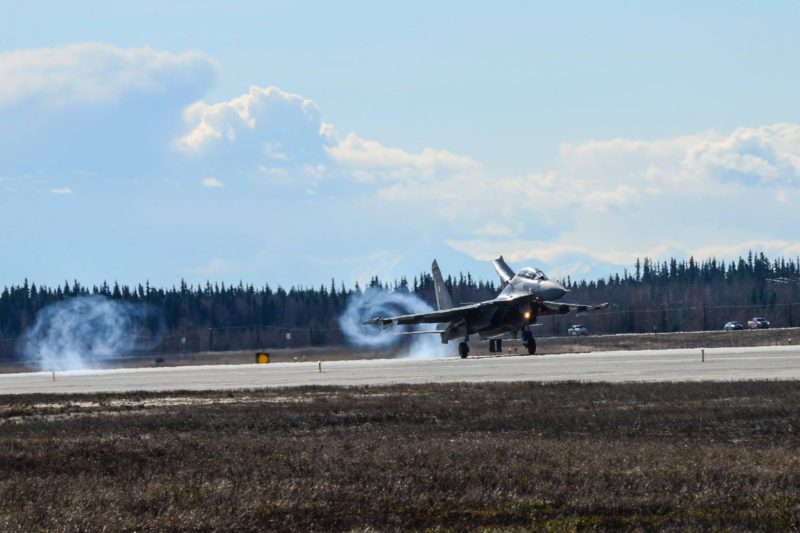
Indian Air Force’s has been participating in its second outing to the U.S. hosted elite air power exercise, Red-Flag. The 12-aircraft IAF team consists of four Su-30 MKIs, four Jaguars, two IL-78 tankers and two C-17s strategic airlift platforms. Apart from the aircraft, the contingent has 202 personnel, including 71 officers. It reached Alaska flying via Bahrain, Egypt, France, Portugal and Canada, demonstrating the Indian Air Force’s recently gained ability to forward deploy. They will be flying against the U.S. Air force 18th Aggressor Squadron.
The Indian Air Force is establishing to deploy a trans-continental task force of fighters, tankers and airlifters. The current network-centric exercise will not only give IAF pilots the opportunity to hone their combat skills with the USAF, but also serve to establish IAF’s capability to deploy overseas. Though not in the doctrine and in the requirements today, Indian Air Force will gain experience and hone their combat skills.
The first of four exercises planned for this calendar year includes more than 80 aircraft and hundreds of participants, to include the Eielson’s F-16 Aggressor aircraft; F-15 Eagle tactical fighters and KC-135 refueling aircraft from KadenaAirBase, Japan; F-16 Fighting Falcons from Kunsan Air Base, Republic of Korea; 137 U.S. Navy EA-18G Growler electronic attack aircraft out of NAS Whidbey Island, Washington; Su-30MKI fighter aircraft from Sirsa Air Force Station, India; Jaguar attack aircraft from Ambala Air Force Station, India; IL-78MKI refueling aircraft from Air Force Station , Agra, India; KC-135 refueling aircraft at Eielson; HH-60 Pave Hawk helicopters from Joint Base Elmendorf-Richardson, Alaska, and special operations Airmen from JBER and Fort Wainwright, Alaska, as well as airmen with the Indonesian Air Force.
The exercises are conducted in the Joint Pacific Alaska Range Complex (JPARC), the largest instrumented air, ground and electronic combat training range in the world (encompassing more than 65,000 square miles), and in special use airspace across the state, with air operations flown out of Eielson Air Force Base, Alaska and Joint Base Elmendorf-Richardson JBER (official). – U.S. Pacific Command
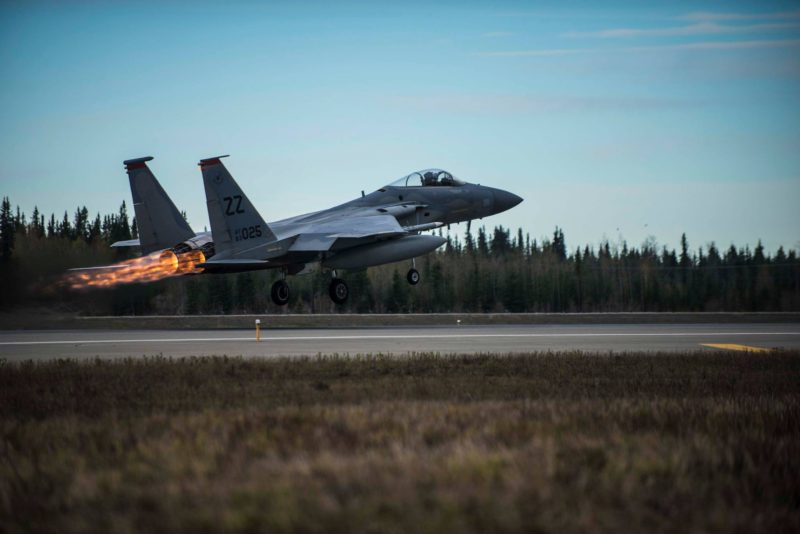
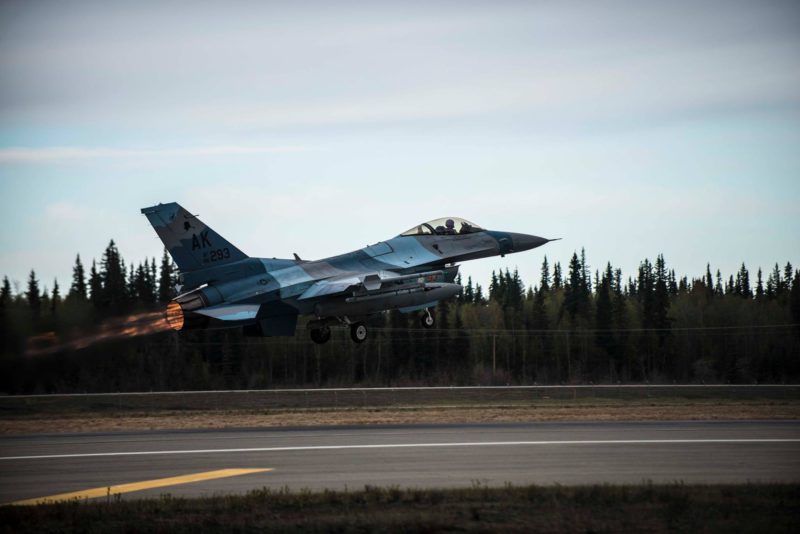
The Indian Air Force have some impressive inventory to challenge the Block 30 General Dynamics F-16C/D, such as the formidable Russian-Indian fighter the Sukhoi Su-30MKI. The MKI was developed for India and is a huge plane. The Russians were so impressed by the MKI that they have their own localised MKI version, the Sukhoi Su-30 SM.
The MKI has a multinational avionics kit which puts technology from Israel, France, India, and Russia into one plane. It was an Indian-led project; the integration and testing was done in India; and several critical subsystems like the mission computer, display processor, radar processor, radar warning receiver, etc. were designed and developed in India by DRDO and its affiliates. The massive success of this effort is what made the Russian Su-30SM and export versions like the MKM and MKA possible.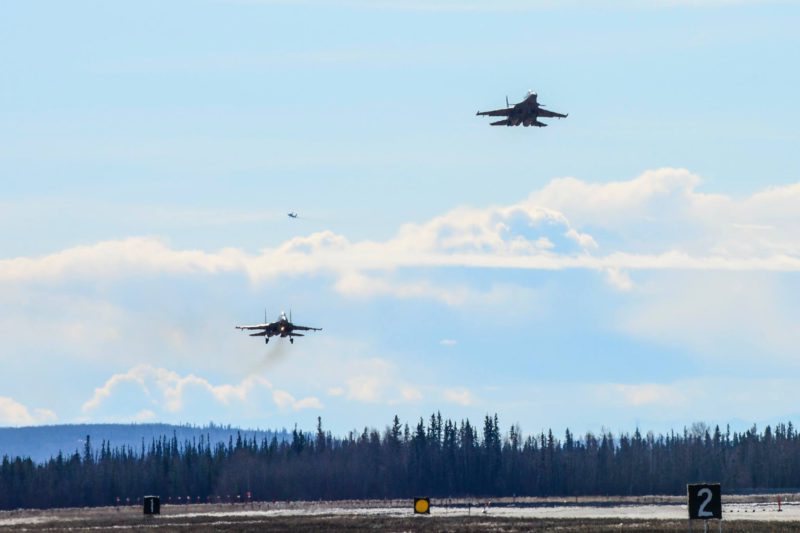
It is very rare to see a Flanker with drop-tanks — they were built to have allow a large enough range to conduct air intercepts in Russia. The maneuverability of Flankers is known worldwide to be top notch and this is accomplished by a combination of amazing aerodynamics and fairly powerful engines. The power plants are big, smokey, and heavy, but they are not in any way under-powered.
The Indians are additionally flying the Jaguar. In spite of its age, is a very good deep-penetration strike and close air support bird. It has long legs, and it excels at map-of-the-earth flying. With the DARIN 3 upgrade, which will equip it with a very advanced navigation/attack suite will enable it to be one of the best strike aircraft in the subcontinent.
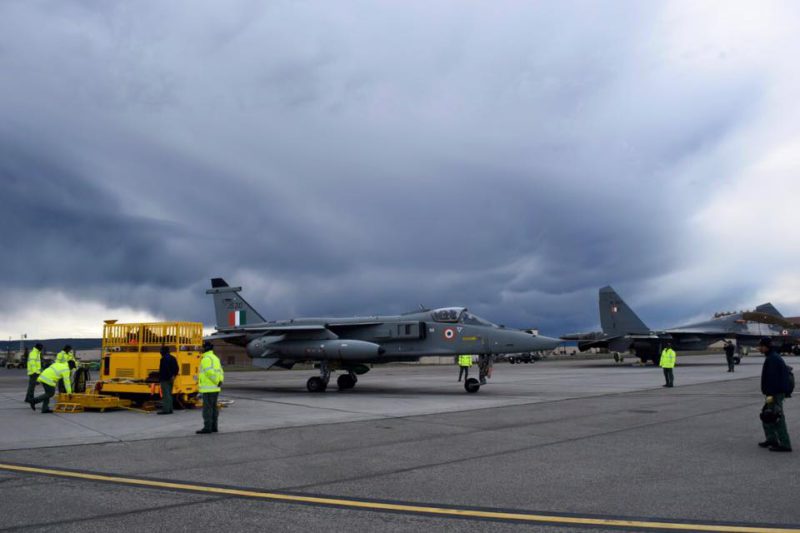
Age alone is no indicator is obsolescence. If that were the case, the B-52 would not have survived three generations of “modern” bombers that were supposed to replace it. The Jaguar will be around until 2025, and it will be potent enough in its role.
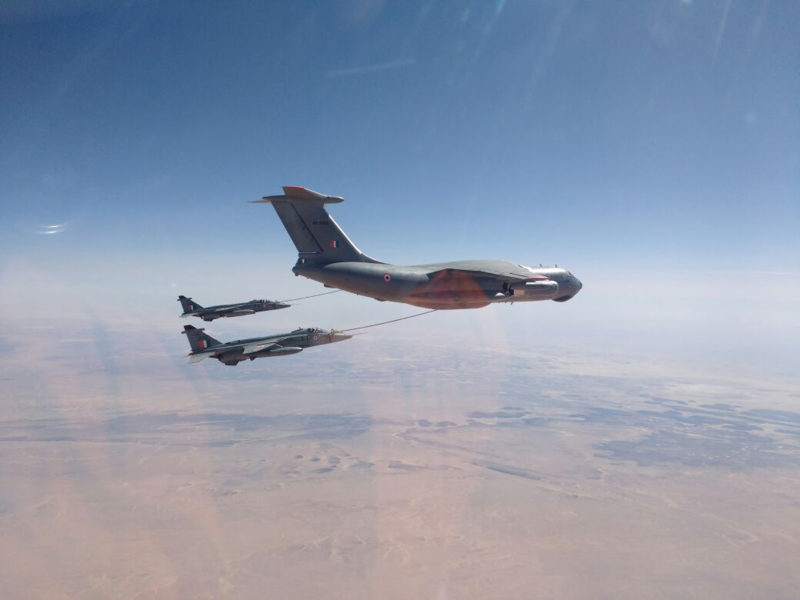
The IAF released an official photograph showing the Jaguars being refueled by IL-78 tankers overflying Dubai on the way to Alaska.









